
Contents



Gangneung Chodang Dubu







People · Written by Lee Hye-min
Photo courtesy of Um Hong Gil Human Foundation
Highs and Lows of
a Champion Mountaineer
Never-Ending Challenge
A serene battle, a war zone with no sound, a battle against himself 8,000 meters
high in the Himalayas. Um Hong Gil has never tried to beat nature.
His biggest opponent is himself. Time and time again, he survived a place where every step
brings agony. Having made it to all 16 peaks of the Himalayas over 8,000 meters
high, he is now on a mission to build 16 schools in Nepal.
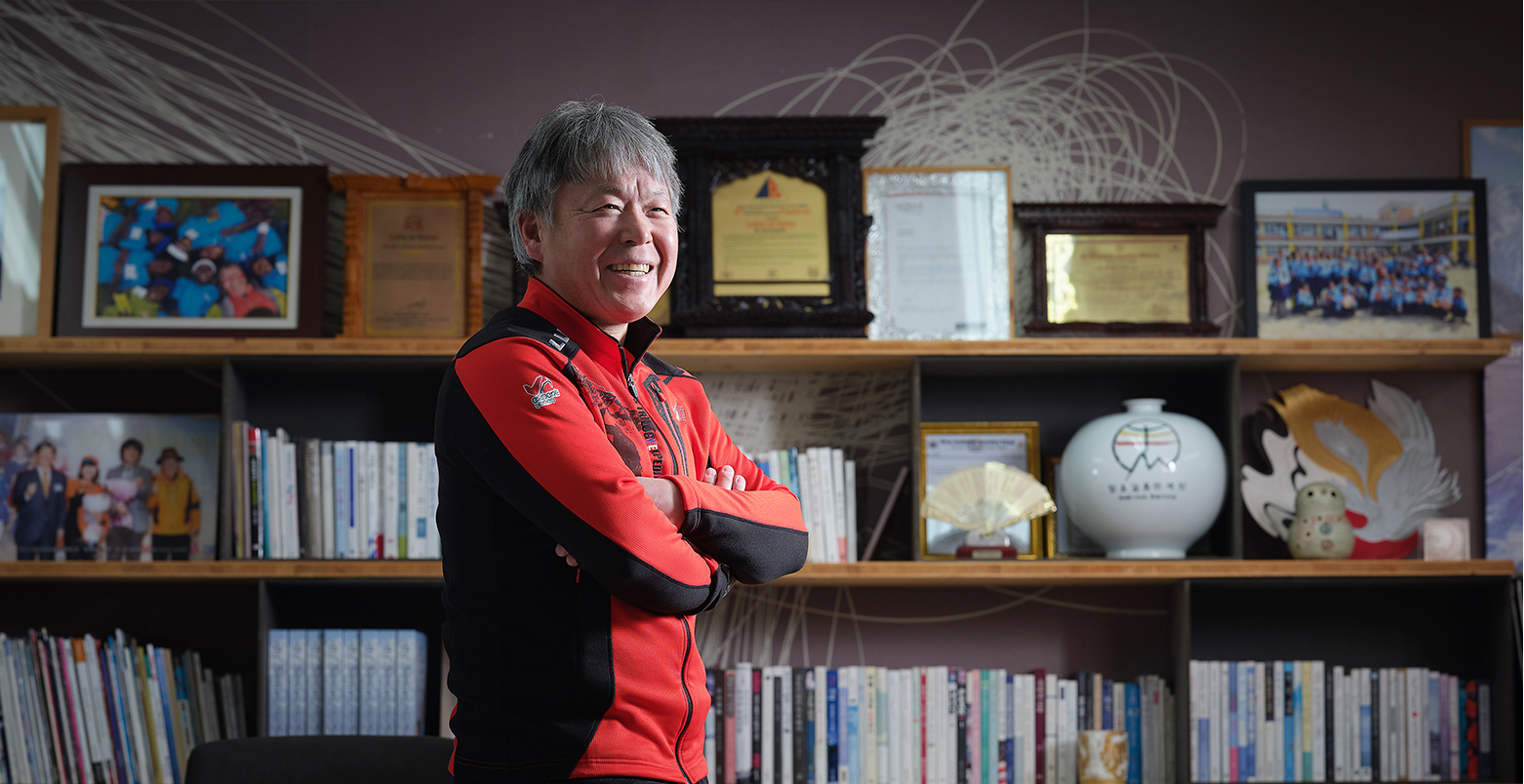
The home Um Hong Gil grew up in was on the hillside of a mountain. His parents built a house on Dobong san Mountain in Seoul and sold things to hikers. The mountain naturally became his best friend and he carried things from the foot of the mountain to help his parents.
“I felt bitter toward my parents and the mountain. I was jealous of friends who lived in the city, thinking why I had to live in the middle of the mountain,” he said. “But what else could I do? It was my home after all—I had to climb every day. I eventually warmed up to mountains and my attitude toward them changed around the eighth grade.” Um said the mountain was there to test him and challenge his boundaries. No longer was it a place he resented but one he wanted to be close to. He gained confidence of reaching the top of any mountain by taking on peaks of varying difficulty in Korea. His ambition soared to the point where he wanted to go to the Himalayas, the world’s tallest mountain range.

Um Hong Gil published several books to tell his stories, including “Both in Mountain and Life, Climbing Down Is More Important.”
Daring to Do the Impossible
Um turned 25 in 1985, the year he decided to take on the Himalayan challenge. A year after he finished the notoriously tough training at the Republic of Korea Navy Underwater Demolition Team, the supremely confident man began planning to climb the treacherous mountain range. His goal was to reach Mount Everest, which he said shows how reckless he was. “Everest as the first project, how reckless and fearless is that? I could do it only because I didn’t know what kind of place Everest was,” he said.
His first winter in Everest was brutal. Hot soup froze when he neared 5,000 meters above sea level. The far bigger danger, however, was the ever-present threat of an avalanche, with snow and falling rocks able to come crashing down from any corner of the mountain. Nobody knew where a crevasse (a deep narrow crack from a glacier) was waiting.
“I failed in my first attempt. The weather wasn’t favorable and I didn’t have the proper skills yet. We had an accident while climbing down the mountain. Falling rocks hit a Sherpa and his ankle was crushed, then a sudden gust of wind caused me to fall 50 meters,” he said.
The next year, he failed in his second attempt at reaching the world’s highest peak. The death of a Sherpa also sapped him of all his confidence; at that time, he vowed never to return the Himalayas again. But he returned there in 1988 and finally reached the top of Mount Everest.
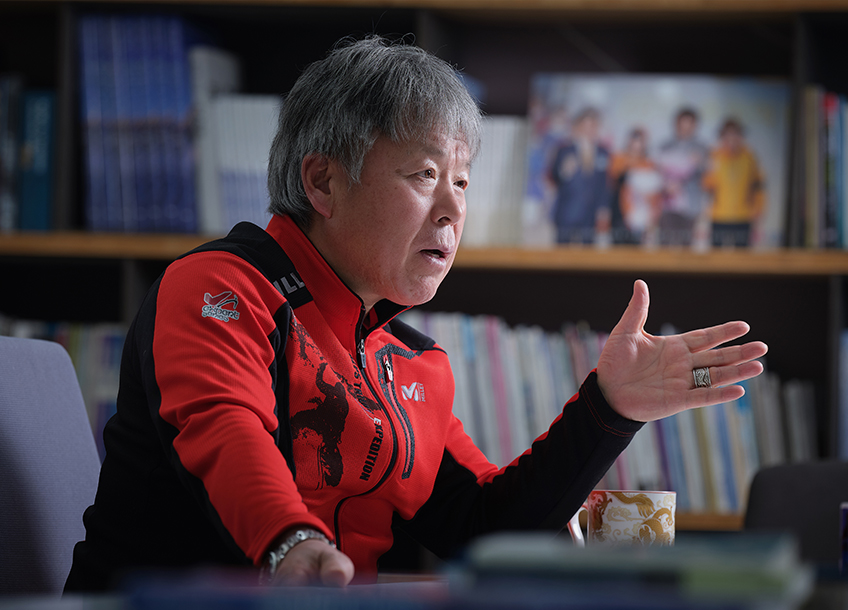
His challenge never stops, even today.
Decade-Long Himalayan Adventure
The Himalayas seemed to be teasing Um, not letting him get to the peak after his success in Everest and causing him to lament his bad luck after a string of failed expeditions. Um often compared himself with other mountaineers who did make it to the top, and dared not dream of getting to all 14 Himalayan peaks.
Amid his frustration, he met a fellow climber who would change his fate. “I met my Spanish friend, Juanito Oiazabal, in 1990. He was a hiker who aimed to climb 14 mountains each 8,000 meters tall. I met him by chance on a mountain and he suggested that we hike together first. That changed my life,” he said.
Um’s journey to Mount Makalu with Oiazabal restored the Korean’s faith that he could do anything. After ridding himself of self-doubt, Um set a goal in 1995 of climbing all 14 Himalayan peaks with an altitude of 8,000 meters.
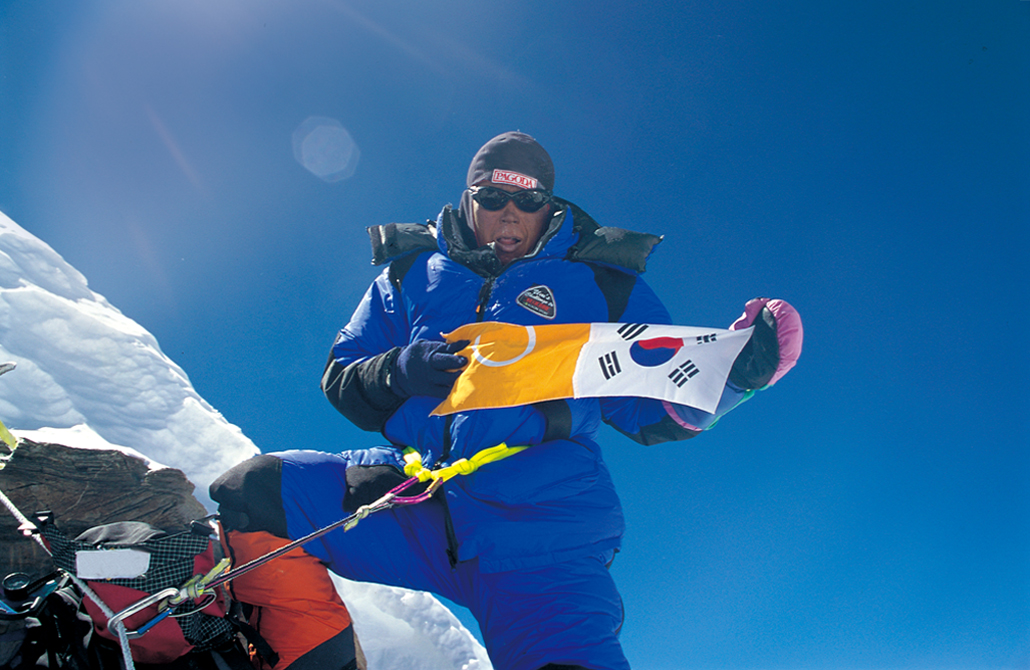 Um Hong Gil in 2001 holds a Korean flag after reaching the top of Mount Lhotse.
Um Hong Gil in 2001 holds a Korean flag after reaching the top of Mount Lhotse.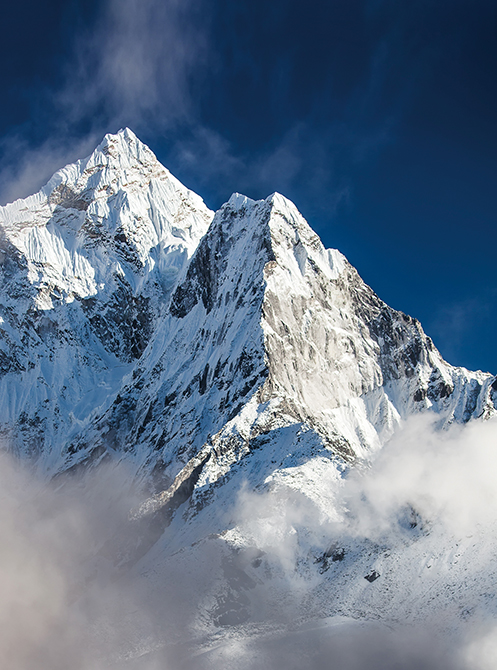 Climbing the daunting Himalayas is a lot different than looking at them.
Climbing the daunting Himalayas is a lot different than looking at them.Setting World Mark of 16 Peaks
Um said he had strong faith and determination as a mountaineer. “It’s self-affirmation. I tell myself, ‘I’m scared and afraid but I’ll get through this, let’s do this, let’s climb, let’s win.’ I kept repeating this to myself. Every step of the way, I smelled the threat of death creeping in, and every moment divided a fine line between life and death. One misstep literally could lead to death, but not letting fear take over me was the only way to get to the top,” he said. Um was not afraid of an avalanche, strong winds or crevasse when he climbed the 14 Himalayan mountains. His only fear was himself and the only thing he needed to beat his foe was himself. To him, giving up meant death.
New Mission in Nepal
The Himalayas had the power to keep him indefinitely but his survival must have meant something, Um said. He wanted to repay the blessings and help he received from people and the mountains during his Himalayan adventure. His desire to reach the peaks turned into softer energy seeking to build a foundation and schools in Nepal for children after he had just two peaks left to achieve his goal.
“The innocent children living at the foot of the mountains have no dreams. They’re trapped in a vicious cycle of poverty and their hopeless situation is passed down from generation to generation,” he said. “I thought education is the only way to tackle the depths of poverty. When I prayed to the god of the Himalayas, I promised to do something of value like that if he sent me back alive.”
Um has kept that promise. After his retirement in 2007, he set up 15 “human schools” and a hospital in Namche Village, which is 3,440 meters high. His 16th project is an education town that includes building educational facilities for students in kindergarten, elementary, middle and high school with indoor gyms and the eventual foundation of a university. The former champion hiker will continue building schools in Nepal after this project is completed.

Um Hong Gil poses with students at Um Hong Gil Human School in Nepal in a heartwarming photo.
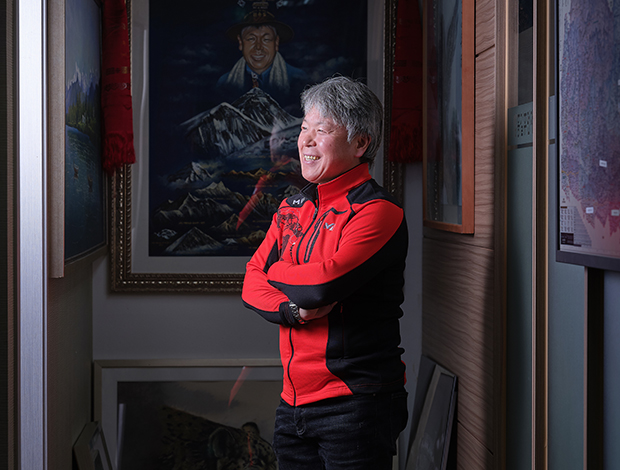
Profil
Um Hong Gil
- 2018
- Appointed principal of National Hiking School
- 2009
- Appointed technical adviser of Millet Inc.
- 2009
- Appointed adviser to Korean Alpine Foundation
- 2008
- Appointed executive director of Um Hong Gil Human Foundation
- 2007
- Became world’s first to reach 16 Himalayan peaks of 8,000 meters each
- 2001
- Received Cheongnyong Medal (sports)
- 2000
- Named “Person of the Year” by UNESCO Korea
- 2000
- Became first Asian to reach 14 Himalayan peaks of 8,000 meters each
- 1996
- Received Maengho Medal (sports)
- 1989
- Received Maengho Medal (sports)
Other Articles



Gangneung Chodang Dubu












